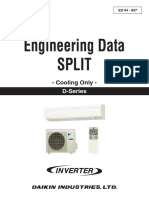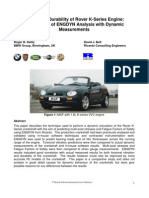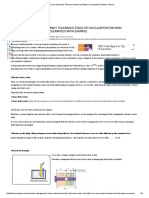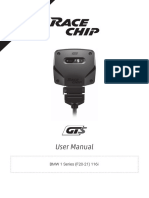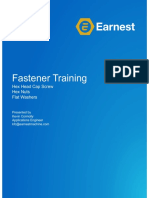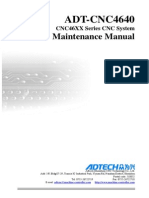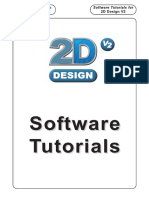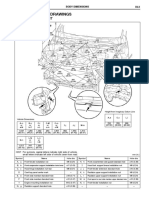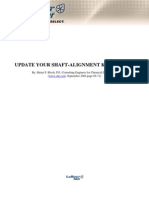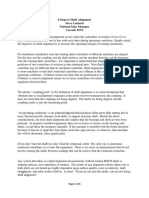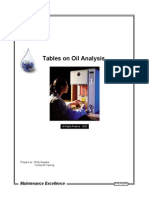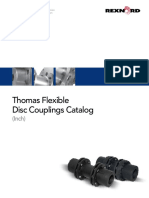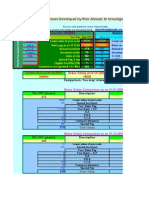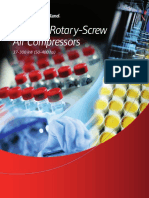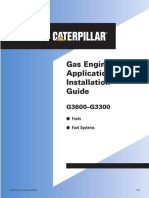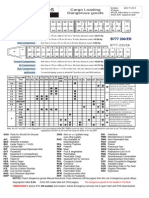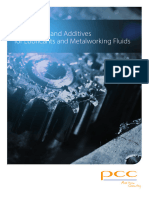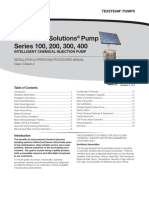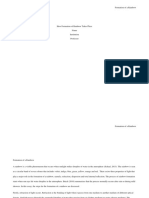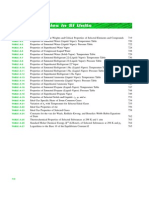INTRODUCTION to BASIC ALIGNMENT
What is Machinery Alignment?
Collinear
shaft centerlines under normal operating conditions
Normal load, temperatures, pressures, flow
�Types of Misalignment
Offset
(parallel)
Angular
�Types of Misalignment
Combination
(Parallel and Angular)
Axial
(coupling gap incorrect)
�Offset (Parallel) Misalignment
Vertical Plane
�Offset (Parallel) Misalignment
Horizontal Plane
�Angular Misalignment
Vertical Plane
�Angular Misalignment
Horizontal Plane
�Combined Misalignment
Vertical Plane
�Problems Caused By Misalignment
High
Axial / Radial Vibration High Bearing Temperatures Bearing and Seal Wear / Failure Coupling Wear / Failure
�Problems Caused By Misalignment
Axial Misalignment Coupling Gap Must Be Correct Or Flexible Element Will Fail Shaft
Cracks Other (rubs, instability, etc.)
�High Axial / Radial Vibration
Vibration Behavior Depends On:
Amount and Type of Misalignment Coupling Type Foundation and Grouting Condition Soft Foot and Casing Distortion
�High Bearing Temperatures
Preload: A Uni-directional Steady State Force Misalignment Can Significantly Increase Bearing Preload
Higher
PSI loading on Babbit Surface Increased Friction
Heavily loaded bearings may exhibit higher than normal metal temperatures
�Bearing and Seal Wear / Failure
Fluid
Film Bearings:
Polishing Wiping
Rolling
Element Bearings:
Shortened Life Span
�Fluid Film Bearing Failure
Tilt-Pad Bearing With Localized Wiping
�Rolling Element Bearing Life Calculation
Hours of life L10 = for 10% failure rate
16,700
dynamic capacity x load rating
L10 =
rpm
FORCE
�Problems Caused By Misalignment Coupling Wear / Failure Gear Tooth Failure
Gear-Type Coupling
�Shaft Cracks
�Other Problems Caused By Misalignment
Rubs Seal Rubs Bearing Rubs
Instability Unloaded Bearing
�Other Problems Cause By Misalignment
High
Unbalance Response
Unloaded Bearing
Mechanical
Looseness
�Misalignment Detection
Vibration
Data Shaft Average Centerline Position Bearing Metal Temperatures
�Misalignment Detection
Casing
Expansion Trend Data Hot Alignment Monitoring Infrared Thermography
�Misalignment Detection
Machinery
Inspection Maintenance History Mechanical / Metallurgical Inspection of Components
�Misalignment Detection Contd
Axial
and Radial Vibration (1X, 2X) Orbits with High Degree of Preloading Abnormal Shaft Average Centerline Position
�Vibration Data
High Axial Casing Vibration
�Vibration Data
Figure 8 may occur at 1/2 of any resonance
Orbits With Increasing Preload From Misalignment
�Shaft Average Centerline Position
Preloaded Orbit and Corresponding Shaft Average Centerline Plot
�Bearing Metal Temperatures
RTD / Thermocouple Typical Babbit Bearing Metal Temperature: 160 F to 180 F
A Metal Temperature Approaching 220 F May Cause Failure Of The Bearing (babbit melts at 260 F , but will move at 240 F )
�Bearing Metal Temperatures
Lube Oil Drain Temperatures Generally Unreliable:
Not a direct measurement
May be a common drain from several sources
�Misalignment Detection Contd
Use Trend Data
During Loading Following A Cold Startup Thermal Growth Changes Occur Vs. Time Vibration Vs. Time Bearing Metal Temperatures Vs. Time
�Misalignment Detection Contd
Casing Expansion
Unbound Axial and Radial Growth Dual Casing Expansion Determine Local Temperatures
Infrared Thermography
�Misalignment Detection Contd
Piping Hangers
Should Not Oppose Thermal Growth Of Piping
Expansion
Joints
Allow Relief For Thermal Expansion
Flange
Bolts
Check For Loose Or Broken Bolts
�Misalignment Detection Contd
Shims
No More Than 3-4
Check For Rust, Paint, Looseness
Dowel Pins Check For Loose, Damaged, Missing Pins
�Misalignment Detection Contd
Maintenance History
Machine Reliability Repeated Failure of Components? Alignment Readings Changes to Alignment
�Misalignment Detection Contd
Mechanical / Metallurgical Inspection Of Worn Components
Couplings Bearings Seals
�Misalignment Detection Contd
Use and correlate all information








